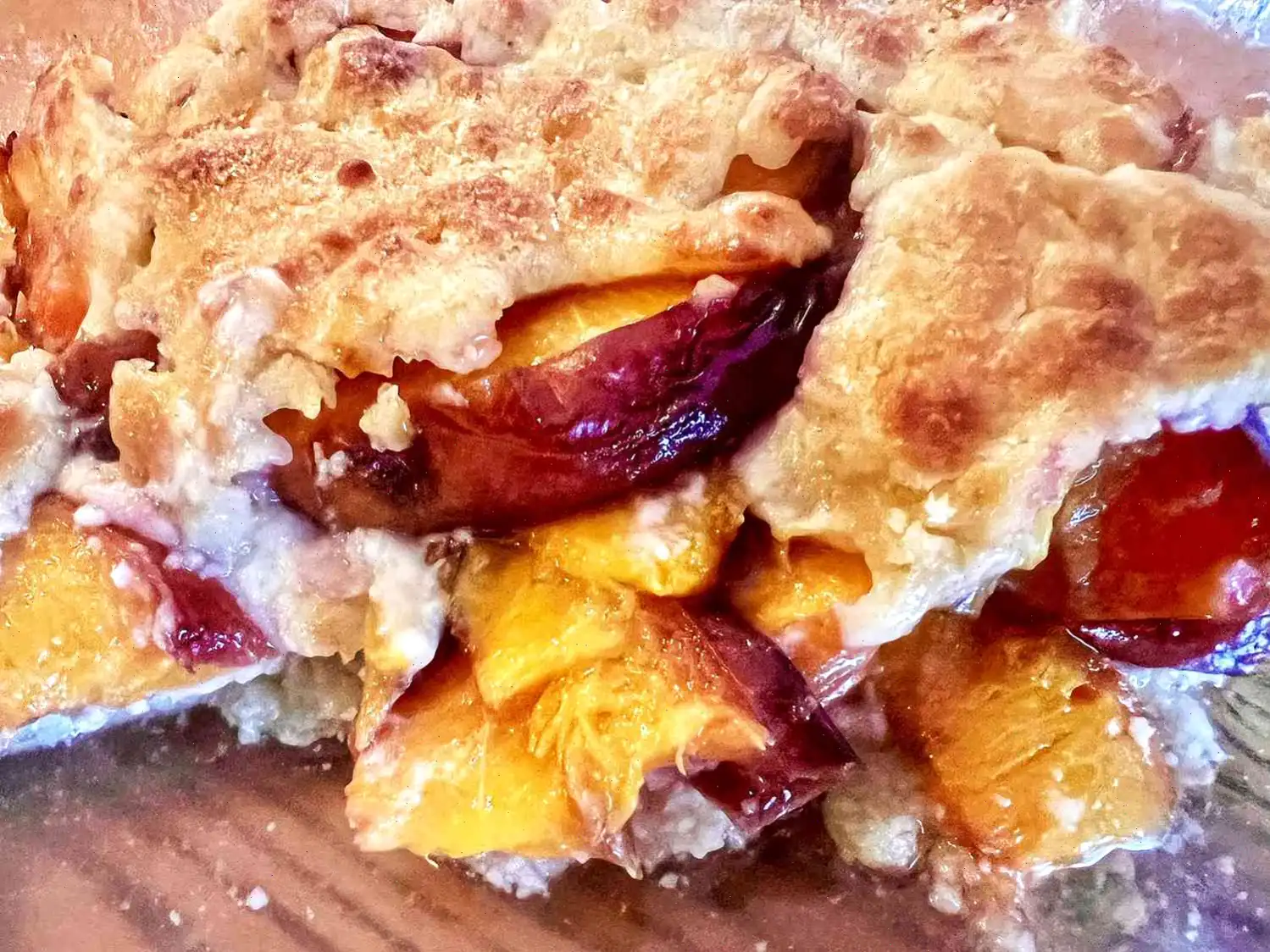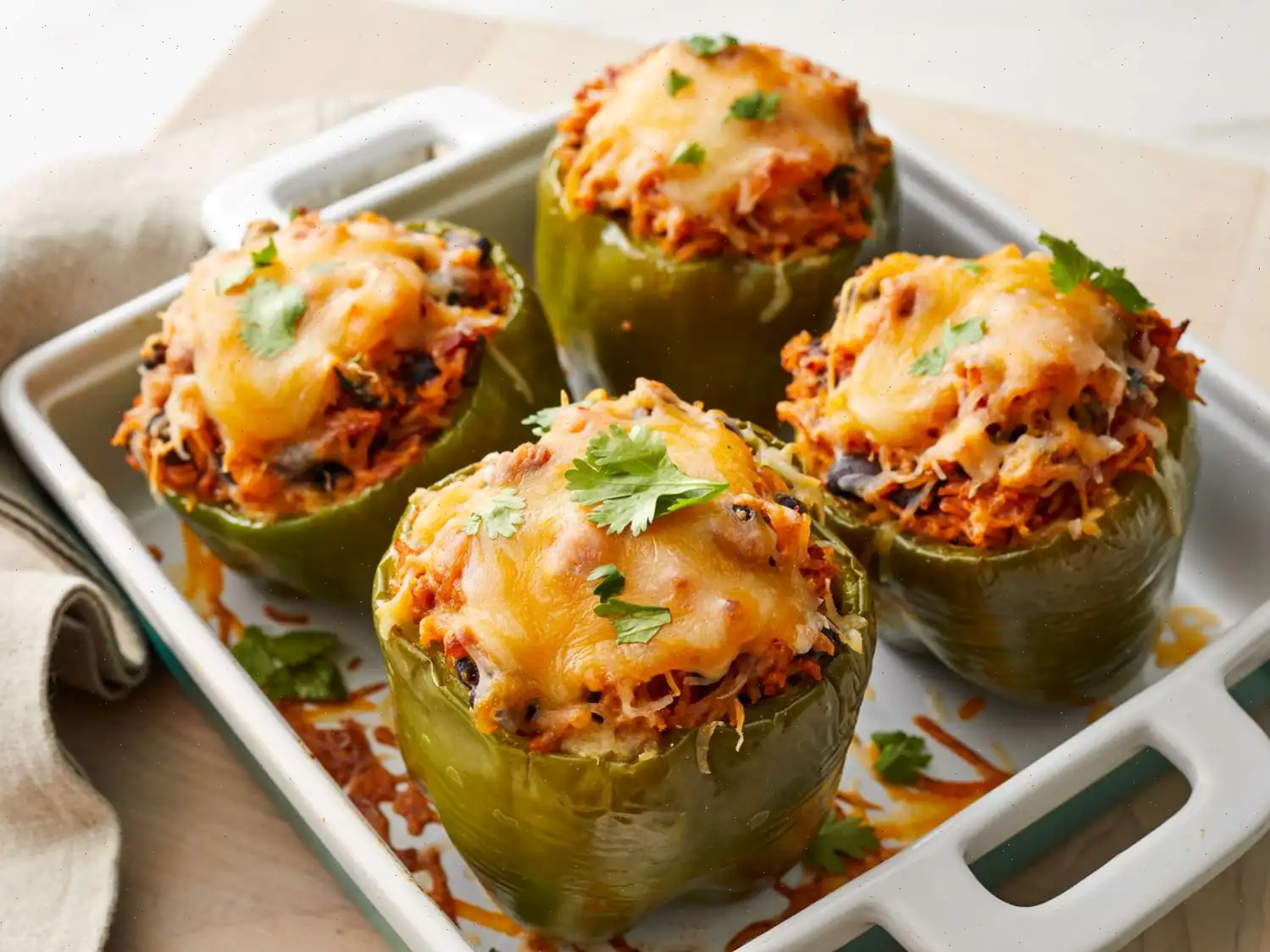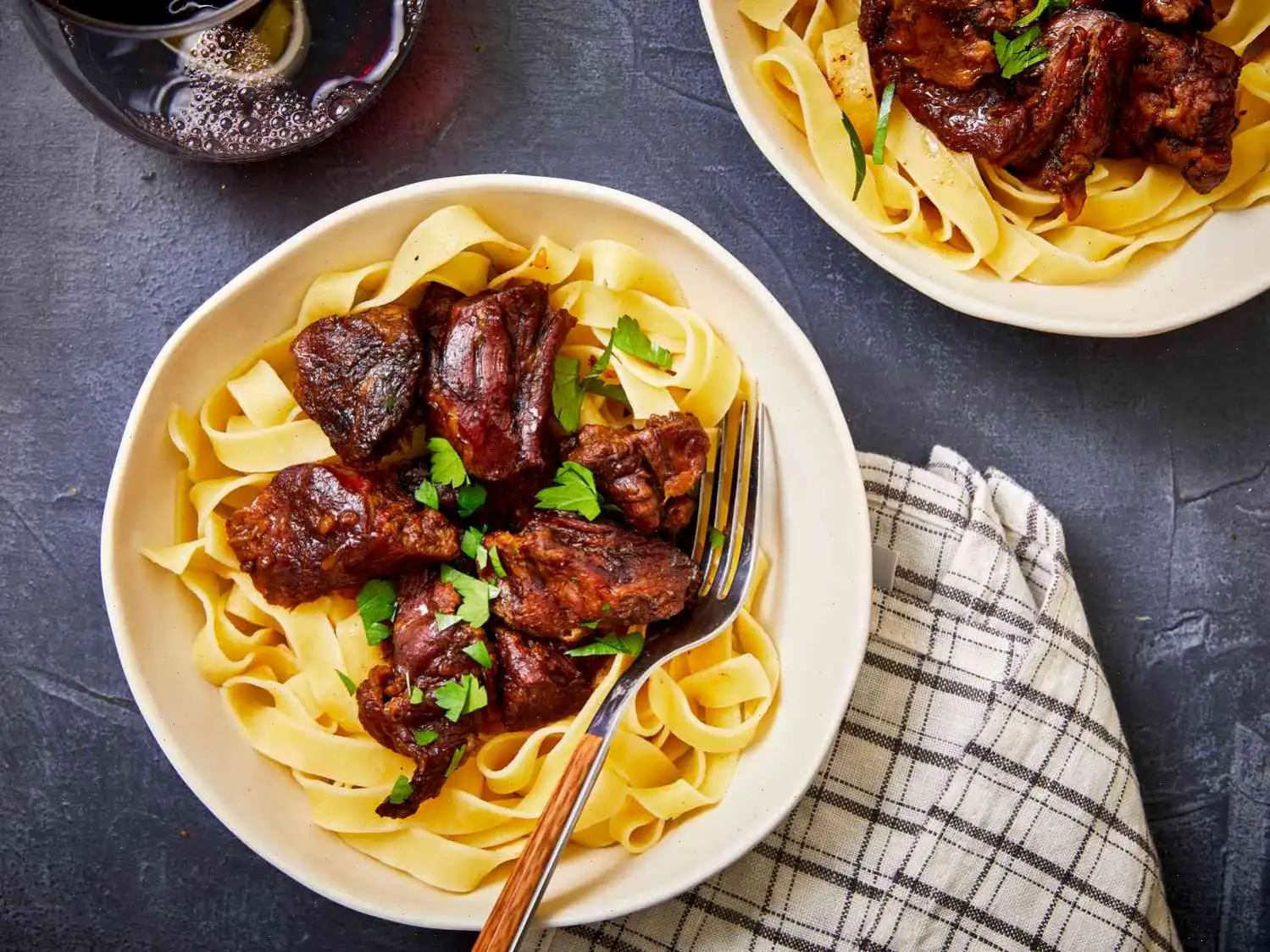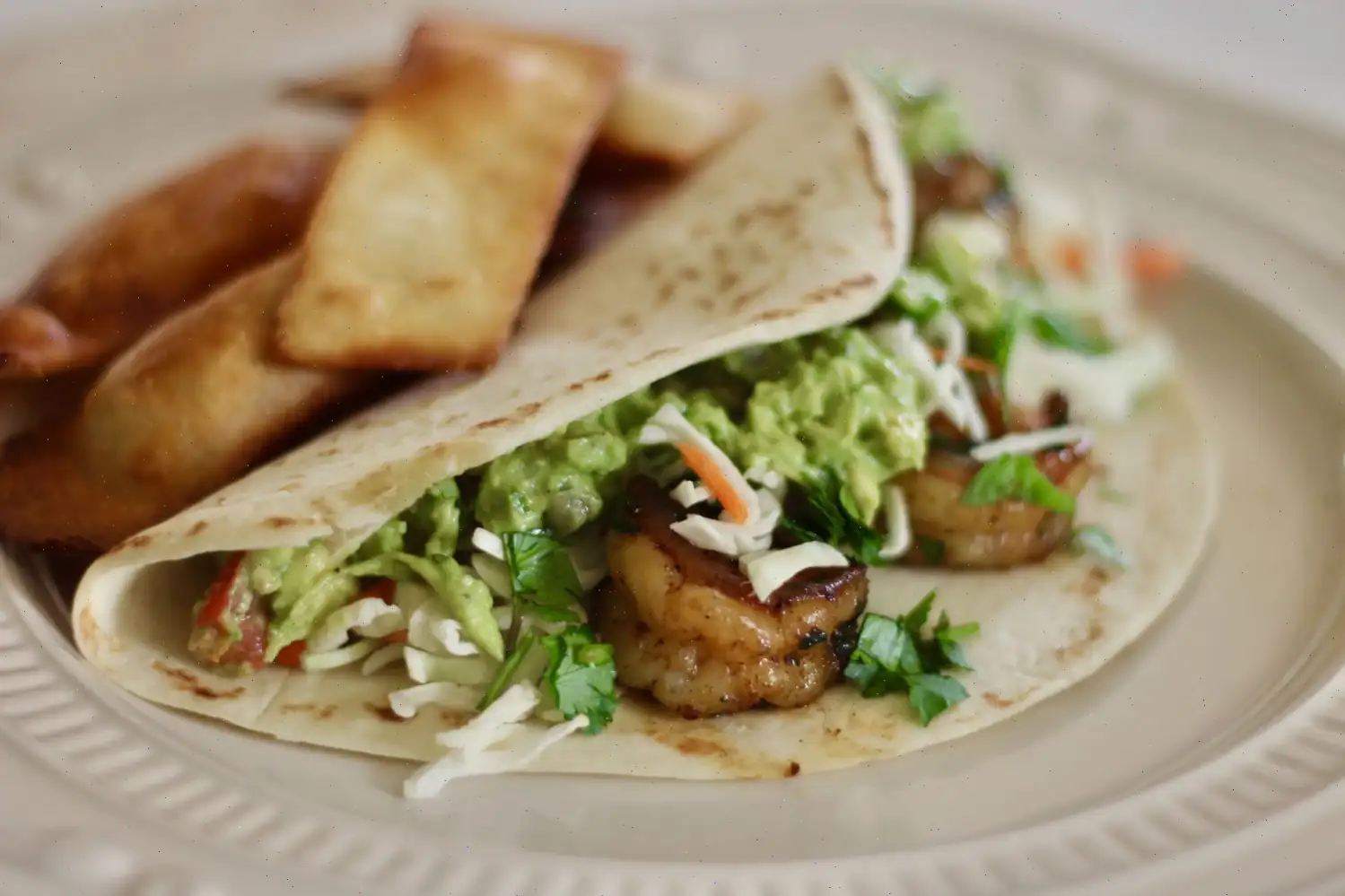
Nectarine Cobbler Recipe
Ingredients
- Nonstick cooking spray
- 2 1/4 cups white sugar, divided
- 2 cups all-purpose flour
- 2 large eggs
- 1 1/2 cups melted butter
- 2 teaspoons vanilla extract
- 2 pounds nectarines, pitted and sliced into 12 slices each
Directions
Step 1: Preheat the oven to 375F (190C). Lightly spray an 8x8-inch baking dish with nonstick cooking spray.
Step 2: In a mixing bowl, combine 2 cups of sugar, flour, eggs, melted butter, and vanilla extract. Stir until a smooth batter forms.
Step 3: Spread half of the batter evenly in the prepared baking dish. Place the dish in the oven and bake for 20 to 25 minutes or until the crust turns golden brown.
Step 4: While the crust bakes, toss the sliced nectarines with the remaining 1/4 cup of sugar to coat the fruit evenly.
Step 5: Once the crust is done, remove it from the oven. Evenly spread the nectarine slices over the baked base layer.
Step 6: Drop spoonfuls of the remaining batter over the fruit, covering it as much as possible.
Step 7: Return the dish to the oven and bake for an additional 28 to 35 minutes, or until the cobbler is golden and the fruit is bubbling.
Optional Step 8: For an extra crispy topping, preheat an air fryer to 400F (200C). Place the cobbler in the air fryer for about 5 minutes, or until the top becomes crunchy.
Nutrition Facts (per serving)
- Calories: 629
- Total Fat: 32g (41% Daily Value)
- Saturated Fat: 20g (99% Daily Value)
- Cholesterol: 123mg (41% Daily Value)
- Sodium: 260mg (11% Daily Value)
- Total Carbohydrates: 82g (30% Daily Value)
- Dietary Fiber: 2g (9% Daily Value)
- Total Sugars: 58g
- Protein: 6g (11% Daily Value)
- Vitamin C: 5mg (6% Daily Value)
- Calcium: 26mg (2% Daily Value)
- Iron: 2mg (10% Daily Value)
- Potassium: 259mg (6% Daily Value)
Servings Per Recipe: 9

Recipe by: Yolanda Gutierrez
History of Nectarine Cobbler
The cobbler is a beloved dessert in American culinary traditions, and while its origins are often debated, it is widely considered a dish born out of practicality. The name "cobbler" likely comes from the way the dough is "cobbled" or dropped onto the fruit filling, resulting in a rustic, irregular appearance. As for nectarine cobbler, it is a variation that highlights the tangy sweetness of nectarines, a cousin of the peach. Historically, cobblers were popular in early American kitchens due to their simplicity and the availability of fruits like peaches, berries, and, in this case, nectarines. While the peach cobbler often gets more attention, nectarine cobbler has carved out its place as a refreshing, slightly tart alternative.
Regional Variations
Cobbler recipes are found across the United States, though there are regional twists depending on the local fruit harvest. In the South, fruit cobblers are a staple in the summertime, often served alongside barbeque. Nectarine cobbler, in particular, is more commonly made in regions where nectarines thrive, such as California, known for its abundant fruit orchards. In contrast, in the Midwest, berry cobblers or those made with apples and rhubarb are more typical. While the concept of cobbler remains the same, the fruits chosen for the filling can vary significantly by region and season.
How is Nectarine Cobbler Different from Similar Desserts?
Though it shares similarities with other fruit-based desserts like pies and crisps, the nectarine cobbler stands apart due to its distinct topping. Unlike pie, which is typically encased in a flaky crust, cobblers feature a thick batter or biscuit-like topping that bakes into a crunchy, golden layer. Cobblers are also different from crisps, which often use a streusel topping made of oats, sugar, and butter. The cobblers batter-like topping results in a hearty, cake-like texture that contrasts beautifully with the tender fruit beneath. This makes nectarine cobbler an especially satisfying dessert, providing a rich, textured contrast to the juicy, flavorful fruit filling.
Where is Nectarine Cobbler Typically Served?
Nectarine cobbler is often served as a dessert in casual and family-oriented settings. It is perfect for summer gatherings, barbecues, and holiday meals, offering a sweet, comforting treat that pairs well with ice cream or whipped cream. In the Southern United States, cobbler is sometimes served as a sweet accompaniment to a savory meal, particularly during festive occasions or large family dinners. In more upscale settings, it might be reinterpreted and plated as a gourmet dessert, often garnished with herbs or citrus zest to add complexity to the flavors.
Interesting Facts About Nectarine Cobbler
- Nectarines are a type of peach that is smooth-skinned, making them ideal for this dessert. They are rich in vitamin C and have a tangy sweetness that complements the buttery topping of the cobbler.
- The term "cobbler" was first used in the early 19th century, and the dish was likely a response to the need for an easy-to-prepare dessert using readily available ingredients.
- While peach cobbler is more famous, nectarine cobbler is gaining popularity due to the growing availability of nectarines in supermarkets year-round.
- Cobblers, including nectarine versions, are often made with local, seasonal fruits, making them a versatile dessert. You can easily substitute nectarines with other fruits like berries, apples, or plums depending on whats in season.
FAQ about Nectarine Cobbler Recipe
Comments
Melissa Flores
11/25/2024 04:02:50 PM
So simple yet AMAZING 🙌








